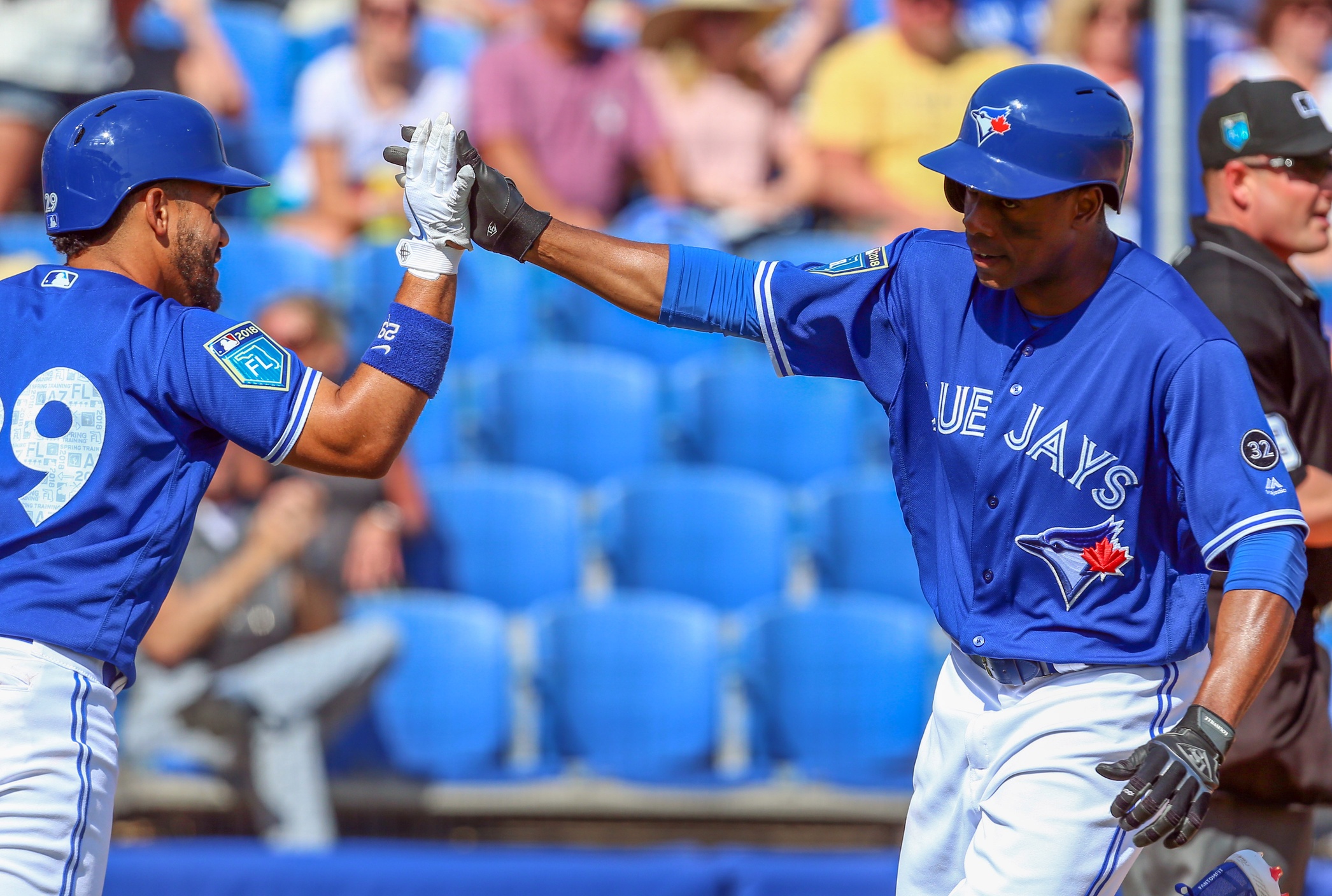It’s a good thing leadoff hitters don’t have to be fast in today’s game, because the Jays don’t have anyone fast. One of the keys to Cleveland’s success over the past two seasons has been Terry Francona’s willingness to start Carlos Santana at the #1 spot despite having speedier options in guys like Rajai Davis, Francisco Lindor, Bradley Zimmer and Jason Kipnis. Santana may be a negative on the bases, but over the course of a 162-game season the extra at-bats he gets from the leadoff spot meant that his ~.360 OBP was getting used to the fullest.
That’s how it’s supposed to work: you trade in speed for on-base ability to get an edge over the long run. And when it works, the payoff can be huge. Cleveland is a shining example of this. But it hasn’t worked out for Toronto since 2016 when John Gibbons experimented with former OBP-god Jose Bautista at leadoff for a stretch of July and August. Last year, Toronto used eight different men in the leadoff spot, with Kevin Pillar (.300 OBP) and Jose Bautista (.308 OBP) accounting for 109 games between them. With the season drawing near, the Jays will need to make find a way to make it work in order to score enough runs to compete against the powerhouse offences in the AL East.
Devon Travis has shown flashes of promise at leadoff and was the favourite to bat first heading into Spring Training, but a solid early showing from Curtis Granderson has muddied the waters. John Gibbons hasn’t made any final decisions yet, so let’s take a look at the strengths and weaknesses of the contenders and see if we can find the optimal leadoff hitter for the 2018 Blue Jays.
Devon Travis
While Travis has spent the majority of his Major league career batting leadoff, he has actually put up far better numbers when batting from the bottom of the order. For his career, he has posted a .693 OPS (74 G) batting first, and a combined .894 OPS (85 G) batting eighth or ninth. I don’t subscribe to the philosophy that your spot in the order has a huge influence on how well you hit, but I could see Gibbons being influenced by that split in making his decision.
The real issue with evaluating Travis as a leadoff candidate is that it’s tough to accurately forecast his on-base ability. The .361 OBP from his rookie season was fueled by an unsustainable .347 BABIP, but the 7.6% walk rate was in line with his minor league averages. Since then, his walk rate has been in the more Jonathan Schoop-ian range of 3.6-4.6%. Meanwhile, the underlying plate discipline stats haven’t shifted too dramatically – his chase rate was actually at a career-low in 2017.
PECOTA’s 50th percentile projection has him posting a .314 OBP, but if the walk rate comes back up to around 6-7% I could see him coming closer to his 70th percentile projection of .339. That’s still not ideal for a leadoff hitter, but Travis has the contact skills and gap power to make up for it.
Curtis Granderson
The Blue Jays’ King of Spring has started the fifth-most games at top of the lineup among active players with 878. And out of the top ten on that list, Granderson has the highest career leadoff OPS at .810.
Unfortunately, the Jays didn’t sign career Curtis Granderson. They have 37-year-old Curtis Granderson, whose 50th percentile PECOTA projection has him at a .328 OBP. While the speed has completely evaporated, Ross Atkins obviously still thinks there’s something left in the tank after watching Granderson post a .228/.334/.481 slash over 111 games (mostly leading off) with the Mets in the first half of 2016.
There are a few things to say about that batting average. One, it is putrid. Two, it was suppressed by a career-low .228 BABIP. Three, batting average always matters, but Granderson also posted a career-high 13.5% walk rate. If the BABIP regresses a touch and the walk rate continues to climb, he could be an interesting option at leadoff.
The greater concern for the Jays is his persistent struggles against lefties. If it becomes a glaring issue he’ll need to be platooned with someone like Steve Pearce or Teoscar Hernández, which seriously erodes his potential viability as a leadoff man.
Anthony Alford
I know I said the Jays don’t have anyone fast, but Anthony Alford begs to differ. He’s currently buried underneath Toronto’s mountain of mediocre outfield options, but Alford possesses a perfect blend of speed, patience, and on-base skills to bat leadoff.
Anyone who has followed him through the minors knows he can work a walk. He posted an absurd .390 OBP across three levels of play last season before sustaining a hand injury that effectively cut his season short. He won’t go crazy on the base paths but has double-digit steal speed and is a smart runner.
The main question is whether his walk rate will translate to the majors without power. To be clear, power is not an essential tool for a leadoff man. But without the threat of power, big league pitchers will have no qualms about attacking Alford in the zone. The pop could still develop for someone as athletic as he is, but until then I have a hard time seeing him maintain his elite walk rate at the top level. Still, given the unconvincing cases Travis and Granderson make, I would take a gamble on Alford at leadoff when he gets called up. He couldn’t possibly be worse than Pillar.
The Verdict
Unless Granderson keeps up his torrid Spring, the leadoff job is likely Travis’ to lose. In an ideal world, Alford forces his way into the outfield early on and runs with the leadoff role after Travis’s on-base ability disappoints.
If you have different thoughts, please let me know in the comments below.
Lead Photo © Butch Dill-USA TODAY Sports
